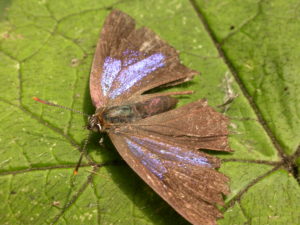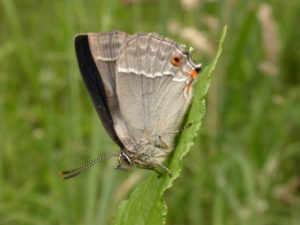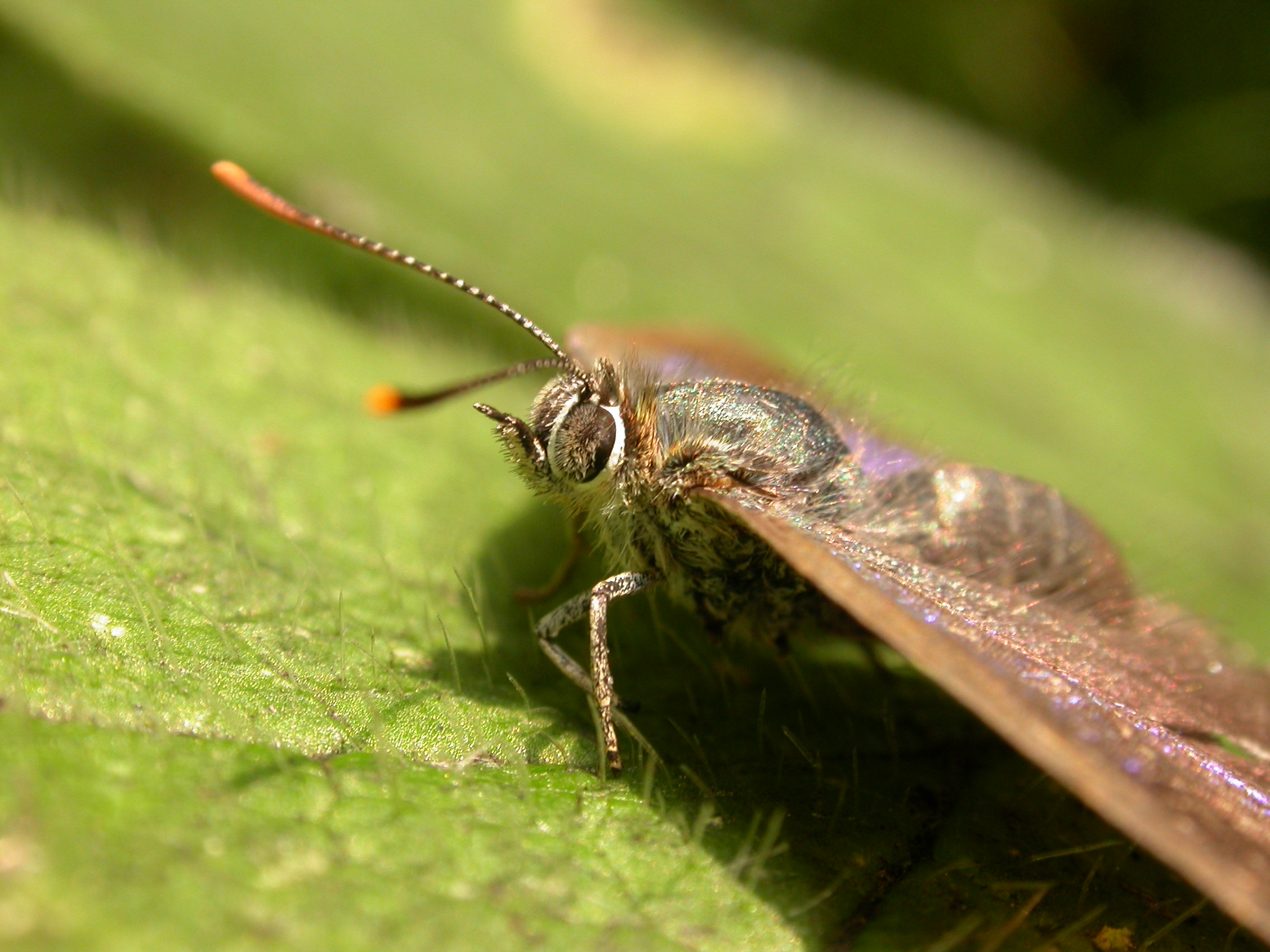
Sheffield and Rotherham Wildlife Trust are letting you in on a little secret- a rarely seen butterfly, the purple hairstreak butterfly, appears to have had a population increase this summer, most likely due to the warm spring weather, and has been spotted across Sheffield. Purple hairstreak is rarely seen because it spends most of its time flying around the tops of oak trees on which it lays its eggs and the caterpillars feed. Although widespread across the UK there are very few records for Sheffield. So this year is your opportunity to spot this rarely seen species and the Trust want to know where and when.
Ben Keywood, Sheffield and Rotherham Wildlife Trust, Entomologists advises how you can spot the purple hairstreak,

“The butterfly flies in July and August, around oaks where it is most commonly found in parks and woodlands where ash also grows in close proximity. Look up in the canopy of the oak trees and nearby ash and you may be lucky enough to spot them flying high, making short flights from branch to branch. Occasionally they will come down to nectar on brambles, thistles, ragwort and other flowers growing at the base of the trees. You will need binoculars as the butterfly is quite small and appears darkly coloured except for the occasional flash of silver from its underwings.”
A great place to attempt to see the purple hairstreak butterfly is Sheffield and Rotherham Wildlife Trust’s Agden Bog nature reserve. A variety of butterfly species can be observed on the reserve and in the surrounding area including the purple hairstreak which has been recently recorded on our Nature Counts sighting database. More recorded sightings of this species and other wildlife, common or rare, you see in your garden or in your local green space are needed and welcomed.
Pete Tomlin, Sheffield and Rotherham Wildlife Trust, Senior Data Management & Monitoring Officer said,
“This information will help us to get a clearer representation of how our local flora and fauna are thriving or where they are in decline. The data collected will also feed in to the National Biodiversity Network’s database, the NBN Atlas, which is shared by ecologists across the country and used to inform national policy decisions about nature and the environment.”
Add your wildlife sightings here.
For more information about Agden Bog Nature Reserves here.
Images: © Philip Precey
Video © Wendy Birks
